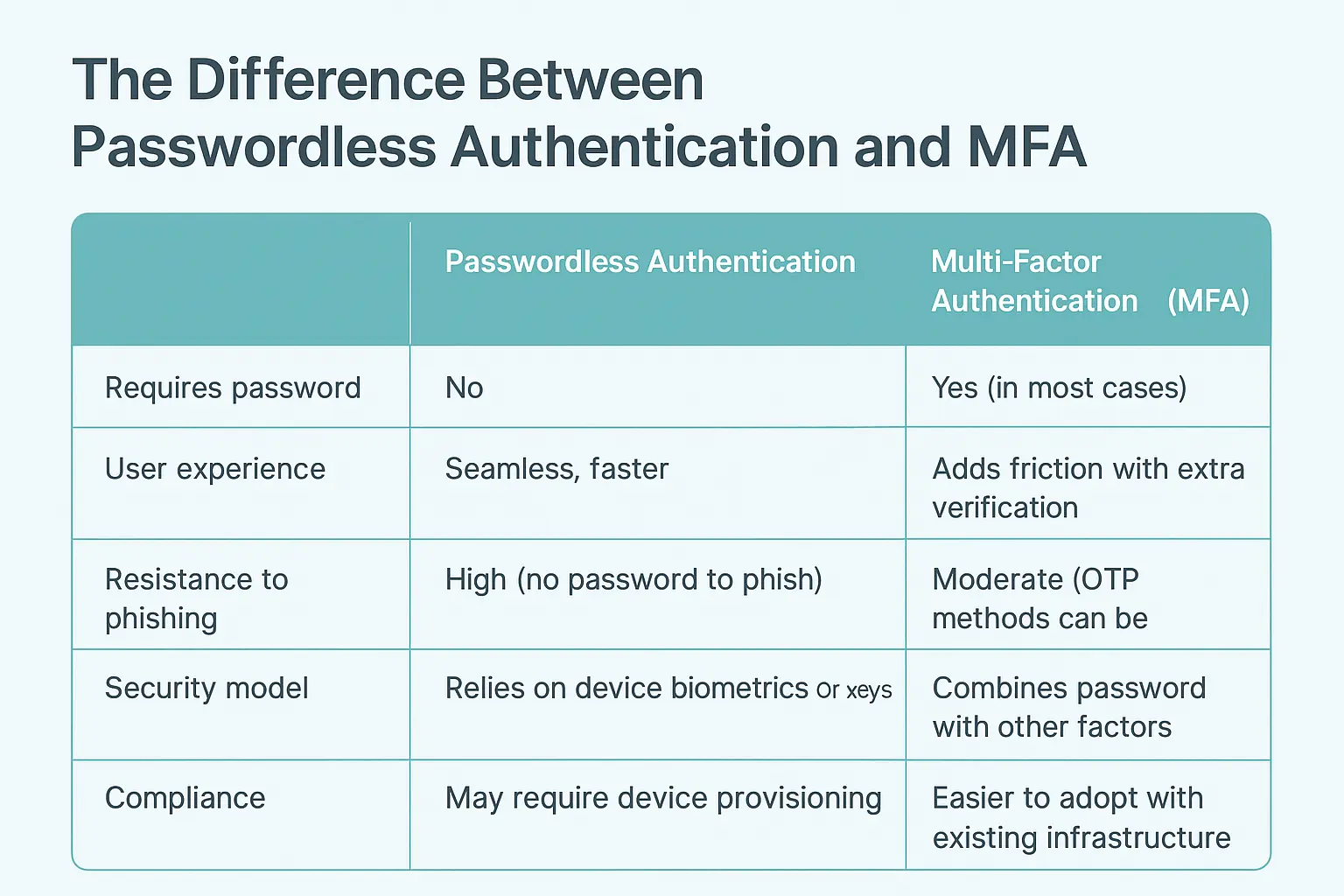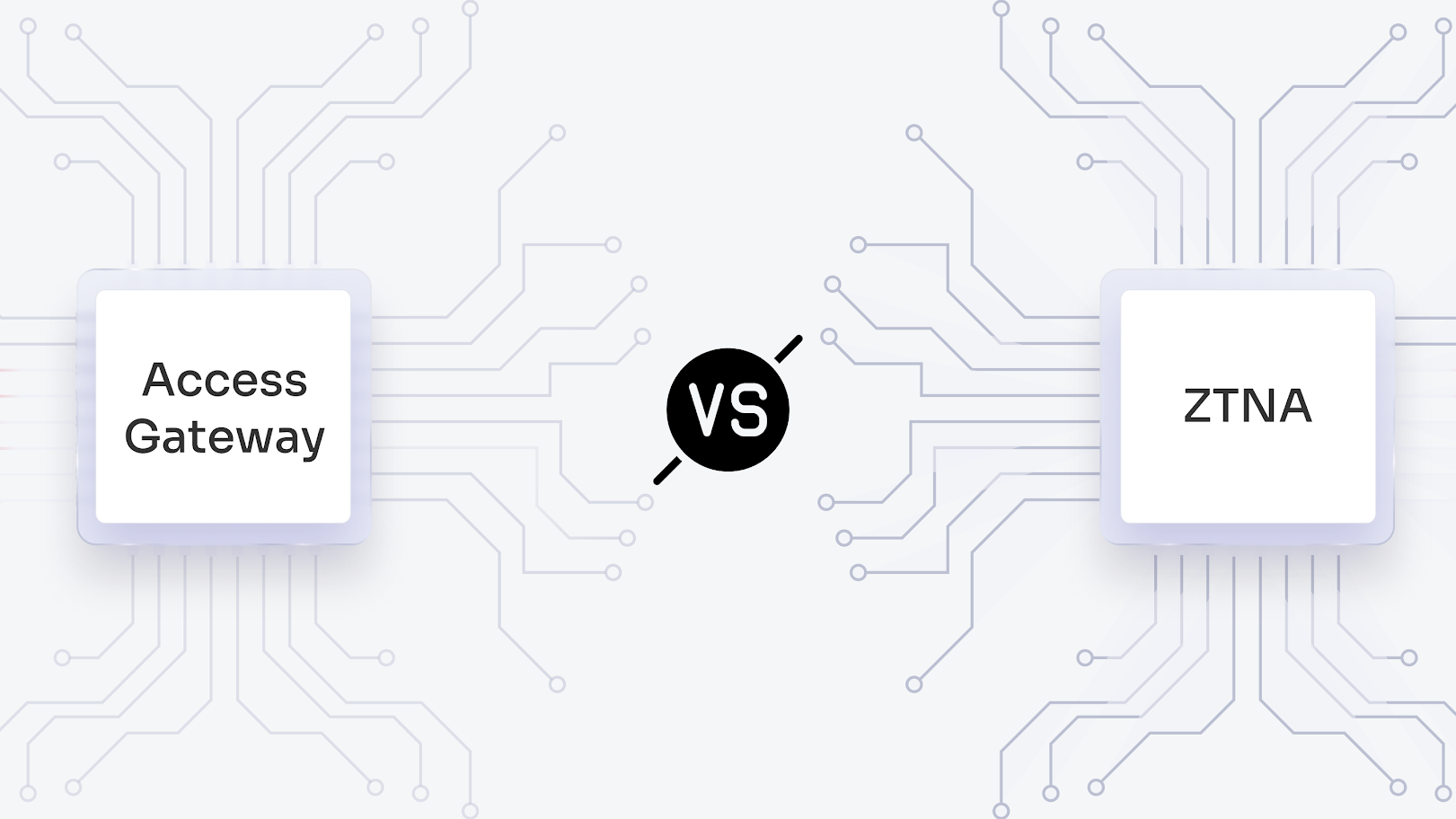Organizations can no longer secure access with passwords alone in the cybersecurity environment, which is dominated by phishing, credential theft, and brute-force attacks. Multi-Factor Authentication (MFA) and passwordless authentication have become the most popular methods for reducing these risks. However, which is better for your company, more user-friendly or more secure?
In a rapidly evolving threat landscape, businesses need an authentication approach that balances robust protection with a seamless user experience. miniOrange offers tailored MFA and passwordless authentication solutions designed to safeguard organizations of all sizes without compromising convenience or compliance. The growing interest in MFA vs passwordless authentication is proof that security and usability can coexist when implemented strategically.
What is Passwordless Authentication?
Modern identity verification technology known as passwordless authentication doesn't require users to enter a password. Instead of passwords, users authenticate using biometrics, device-based credentials, or one-time login links, all of which offer a more secure and intuitive method of login.
By eliminating passwords from the process, passwordless authentication significantly reduces the risk of phishing, credential stuffing, and human error. Its combination of simplicity and security is the reason why the passwordless vs MFA debate often centers on user experience benefits. More and more businesses are embracing passwordless methods as part of their long-term authentication strategy.
Tip: Experience Passwordless MFA for Seamless User Access
Types of Passwordless Authentication
- Biometric authentication (Face, Fingerprint): Users authenticate with facial recognition or fingerprint scans.
- Magic Links: A one-time, time-sensitive link is sent to the user’s email or mobile device for login.
- Push Notifications: User receives a notification on a trusted device to approve or deny the login attempt.
- WebAuthn Keys: A public key-based protocol using hardware authenticators or trusted platform modules.
These methods make passwordless authentication a leading contender in the Passwordless Authentication vs MFA discussion, especially for customer-facing applications.

What is Multi-Factor Authentication (MFA)?
Multi-Factor Authentication (MFA) is a security mechanism that requires users to present two or more independent credentials to verify their identity. These factors typically include something you know (a password), something you have (a device), or something you are (biometrics).
By combining multiple components that are difficult for attackers to compromise simultaneously, MFA provides an essential additional layer of protection against unauthorized access.
Types of MFA
Multi-Factor Authentication can be implemented in various ways to enhance account security:
Multi-Factor Authentication can be implemented in several ways, each designed to enhance account security. SMS/Email OTP involves sending a temporary passcode to the user’s registered phone or email. Authenticator applications generate time-based codes that users enter during login for an added security step. Hardware tokens, such as security keys or smart cards, provide a physical factor that must be present to gain access. Read more detail about multi-factor authentication types by miniOrange.
1. SMS/Email OTP: A one-time passcode sent via SMS or email, typically valid for a short duration. This is one of the easiest MFA methods to implement, as it uses existing communication channels. However, while simple, it’s susceptible to SIM-swapping and phishing attacks if not paired with additional safeguards.
2. Authenticator Apps: Applications like Google Authenticator or Microsoft Authenticator generate time-based one-time passwords (TOTP) that refresh every 30 seconds. This is more secure than SMS-based codes because the process is offline and resistant to telecom-based interception.
3. Hardware Tokens: Devices such as RSA SecurID tokens either generate a new secure code at regular intervals or connect via USB/NFC to authenticate instantly. These offer one of the strongest forms of MFA, as they require physical possession and are extremely difficult to clone.
For organizations evaluating MFA vs passwordless authentication, MFA’s broad compatibility with existing systems is a compelling advantage.
The Major Difference Between Passwordless Authentication and MFA
The most important difference between passwordless authentication vs MFA lies in their approach. Passwordless authentication removes passwords entirely, replacing them with secure, convenient alternatives. MFA, by contrast, enhances traditional password-based logins with additional verification factors.
In the passwordless vs MFA debate, passwordless focuses on eliminating the weakest link, the password, while MFA focuses on reinforcing it with extra layers. Both methods are highly effective when aligned with organizational needs.
When to Choose Passwordless or MFA
- Passwordless authentication is the right choice when user experience is a top priority, e.g. in customer-facing portals or mobile apps where login speed and convenience can directly impact engagement. It’s also ideal for organizations aiming to significantly reduce helpdesk costs related to password resets, or when your workforce is already tech-savvy and equipped with modern devices that support biometric authentication or hardware keys.
- MFA is the right choice for organizations needing a quick, impactful security upgrade without replacing their entire authentication system. Highly regulated sectors such as finance, healthcare, and government benefit from MFA’s ability to meet compliance standards while protecting sensitive accounts. In MFA vs passwordless authentication considerations, MFA’s incremental nature makes it easy to deploy over existing infrastructure.
Adaptability to Emerging Threats with Passwordless Authentication and MFA
How MFA Handles Emerging Threats
MFA protects against brute-force and credential-stuffing attacks by requiring more than just a password to gain access. Many advanced MFA solutions now incorporate contextual checks like IP reputation, geolocation-based access rules, and device fingerprinting. This ensures that even if login credentials are stolen, logins from suspicious devices or unusual locations can be blocked or flagged for additional verification.
Which Authentication is Easy – Passwordless or MFA?
- Passwordless authentication generally offers a smoother, more user-friendly experience because it eliminates the need to remember or enter passwords. Methods like biometric scanning, magic links, or security key taps are fast and intuitive, making them ideal for high-volume customer applications.
- MFA can range from quick and convenient (authenticator apps) to slightly more time-consuming (SMS OTP). Although MFA adds protection, it can also add steps, which may affect user adoption in customer-facing environments. From a usability perspective, passwordless often wins in the MFA vs passwordless authentication debate. From an ease-of-use perspective, passwordless authentication has the upper hand, especially in user-facing applications.
Why choose miniOrange
miniOrange offers comprehensive authentication solutions ranging from frictionless passwordless authentication to robust multi-factor authentication (MFA), all designed to meet your specific security, compliance, and usability needs. Whether you are looking for a personalized consultation to determine the best fit for your organization, want to take a free trial, or wish to explore our pricing plans to find the right balance between budget and security, miniOrange ensures you have the right tools to protect your users and data with confidence.
Our WordPress MFA plugin, Drupal MFA integration, and Magento MFA solution are designed to secure both admin accounts and customer logins, protecting against credential theft and account takeovers. By combining flexible MFA options with Passwordless MFA, your organization can deliver a seamless yet highly secure login experience that builds trust and keeps users coming back.
Conclusion
Both MFA and passwordless authentication are proven ways to secure access, but the decision comes down to your organization’s priorities. MFA is ideal for enhancing existing password-based systems and meeting compliance needs quickly. Passwordless authentication is perfect for delivering a modern, user-friendly experience while reducing password-related vulnerabilities.
With miniOrange, you don’t have to choose one over the other. Our solutions let you deploy either independently or in combination, creating a layered, future-proof authentication strategy. To explore further, check out our 9 Features for IAM Solution and Secure your Remote Work Future with Zoom SSO to strengthen your overall security approach.
Frequently Asked Questions (FAQs)
1. Is passwordless better than MFA?
Passwordless offers stronger phishing resistance and better UX, while MFA provides layered security. The best choice depends on your needs.
2. What is the difference between MFA and passkey?
A passkey is a passwordless credential (like WebAuthn) while MFA refers to using two or more factors. A passkey can be part of an MFA flow.
3. What is the difference between MFA and ZTNA?
MFA verifies identity, while Zero Trust Network Access (ZTNA) controls access to applications based on continuous validation, location, and risk.
4. What is the difference between passwordless MFA and phishing-resistant MFA?
Passwordless MFA uses methods like biometrics and hardware keys without passwords. Phishing-resistant MFA specifically includes technologies like FIDO2/WebAuthn.
5. Can You Use Passwordless and MFA Together?
Yes. Many organizations adopt a hybrid approach where passwordless login methods are combined with other authentication factors like device checks, biometrics, or location verification to further strengthen security.
miniOrange
Author




Leave a Comment